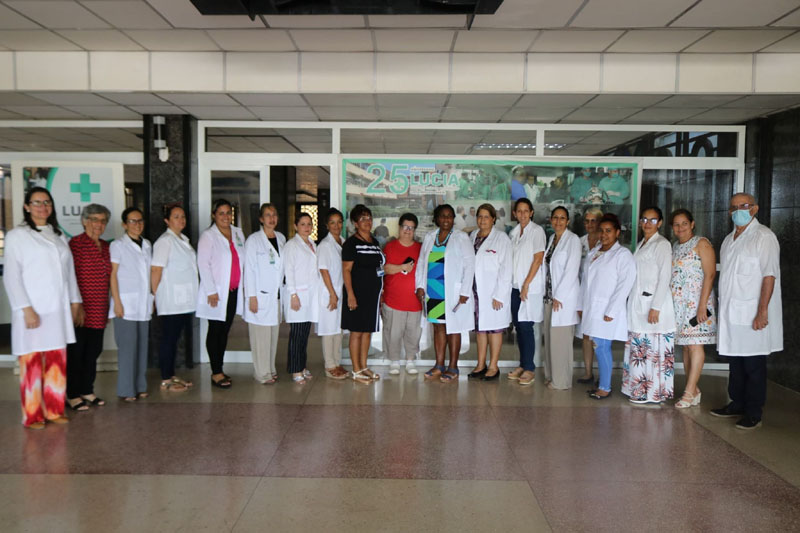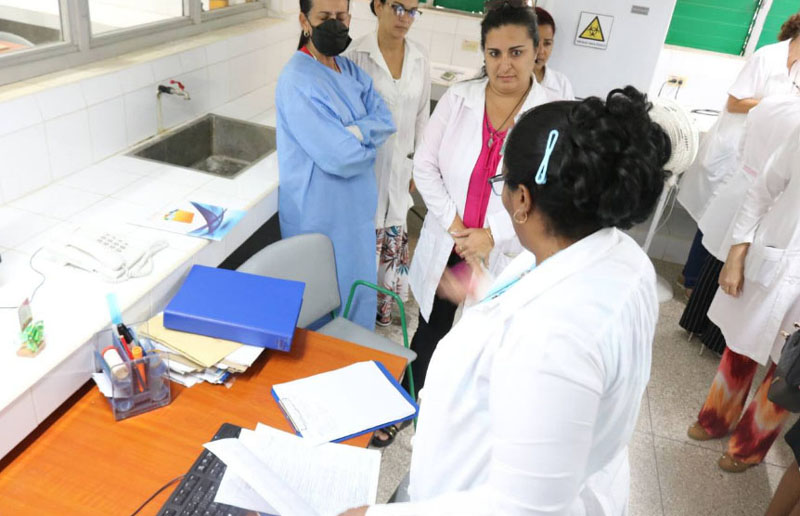Cirah clinical site certified in Holguín
- Written by Lourdes Pichs Rodríguez
- Published in Health
- Hits: 1324
 Photo: Evaluation team with professionals from Cirah and the "Lucía" hospital. Photos: Eyris Cruz
Photo: Evaluation team with professionals from Cirah and the "Lucía" hospital. Photos: Eyris Cruz
The Center for Research and Rehabilitation of Hereditary Ataxias (Cirah) in Holguín has been certified as a clinical site for Good Clinical Practices, becoming the fourth in the country to receive this distinction after a rigorous inspection conducted by experts from the Center for State Control of Medicines, Equipment, and Medical Devices (Cecmed).
The regulatory authority group, led by Dr. C. Diadelis Ramírez Figueredo, reviewed the clinical trial processes, the functioning of the Ethics Committee for research, as well as the quality and traceability of each one.
They highlighted the quality and commitment of Cirah’s staff who have conducted seven clinical trials since 2010, including a current study on the use of NeuroEPO for spinocerebellar ataxia type 2 (SCA2.

The three specialists from the Regulatory Agency also certified Cirah's support services at the Lucía Iñiguez Landín hospital, affiliated with Cirah, especially its laboratory and pharmacy, were certified and recognized for their orderliness and regulatory compliance.
This certification, valid for three years, guarantees patient protection and quality in the clinical research conducted at the center.
Dr. Zaymar Rodríguez Feria, provincial coordinator of Clinical Trials in Holguín expressed great satisfaction with this achievement and pointed out that the aspiration is for other sites in the province with long experience in this activity to undergo this evaluation, for example the Vladimir Ilich Lenin University General Hospital, where there is a high level of preparation and a large volume of CT, as well as the Lucía Íñiguez Landín Surgical Clinic.
Founded in 2000, Cirah is unique in Cuba and Latin America, specializing in the care and rehabilitation of patients with hereditary ataxias, particularly SCA2, which has a high prevalence in Holguín, the region with the highest incidence worldwide.
